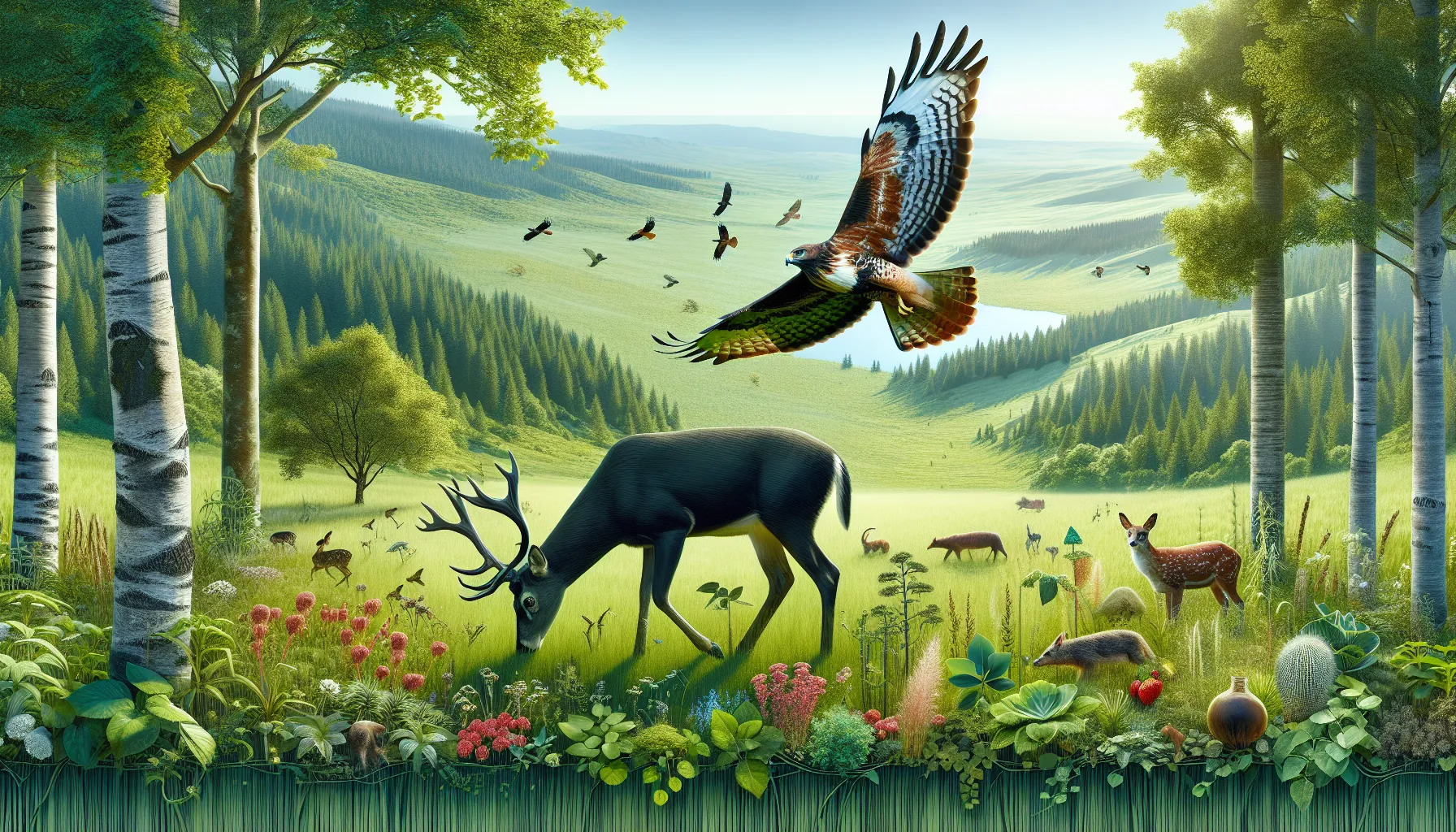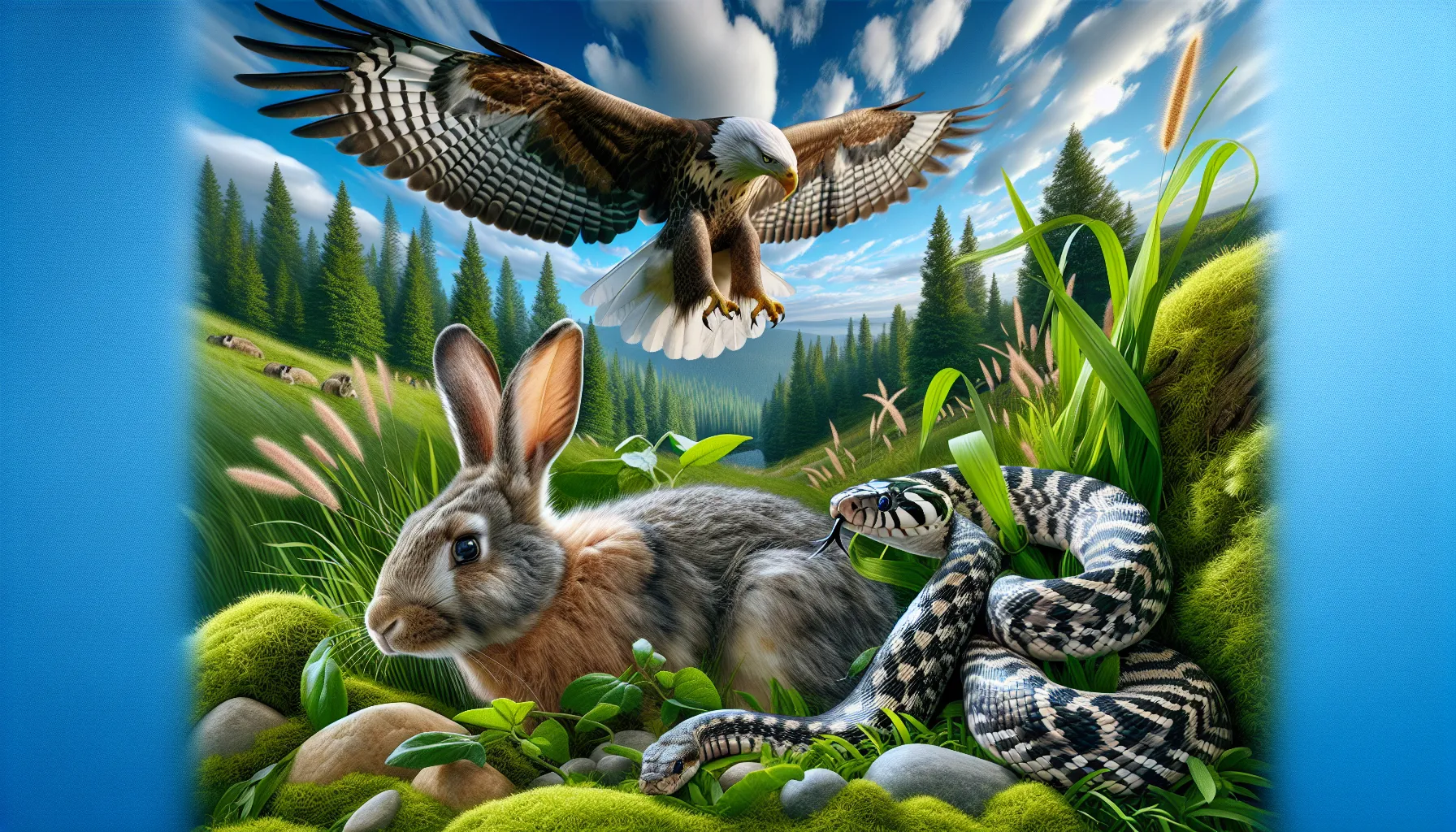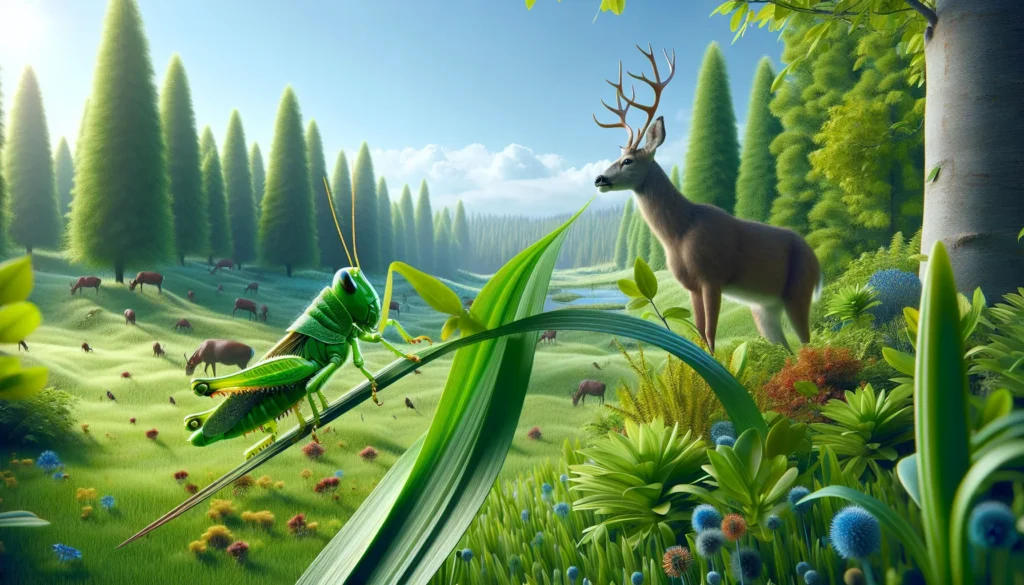Key Takeaways
- Consumers in science are organisms that rely on other living or once-living organisms for energy, contrasting with producers that create their own food.
- They are classified into three main types: primary consumers (herbivores), secondary consumers (carnivores or omnivores), and tertiary consumers (apex predators).
- Consumers play a vital role in energy transfer and maintaining ecosystem balance by regulating populations and ensuring sustainable food chains.
- Primary consumers transfer energy from producers, while secondary and tertiary consumers continue the energy flow up the food chain.
- Studying consumers offers insights into biodiversity, population dynamics, ecosystem health, and the importance of sustainable resource consumption.
When I first heard the term “consumer” in science, I couldn’t help but think of shoppers at a store. But in the world of science, especially ecology, it means something completely different. Consumers are living organisms that rely on others for food and energy, making them a vital piece of the food chain puzzle.
Think of it this way: plants produce their own food using sunlight, but animals like us? We depend on eating plants or other animals to survive. That’s what makes us consumers. From tiny insects to massive predators, consumers come in all shapes and sizes, each playing a unique role in ecosystems.
Understanding consumers isn’t just about knowing who eats what—it’s about seeing how energy flows through nature and how every living thing is connected. It’s fascinating to dive deeper into this concept and uncover the hidden dynamics of life around us.
Understanding The Concept Of Consumers In Science
Consumers in science refer to organisms that obtain energy by consuming other living or once-living organisms. Unlike producers, such as plants and algae, consumers cannot create their own food through photosynthesis or other processes. They rely entirely on other organisms for sustenance.
Consumers are classified into different types based on their feeding habits. Primary consumers, like herbivores (e.g., deer, rabbits), feed directly on producers. Secondary consumers, such as carnivores (e.g., foxes, frogs), prey on primary consumers. Tertiary consumers, including apex predators like lions or eagles, occupy the top levels of the food chain and may consume secondary consumers.
Understanding these classifications highlights their ecological role in energy transfer. They act as links between producers and other consumers, moving energy through the ecosystem. For example, a grasshopper eating grass represents a primary consumer, while a bird preying on that grasshopper exemplifies a secondary consumer. These interactions showcase the dependency and balance required in natural systems.
Types Of Consumers In Science

In science, consumers are categorized based on their dietary sources and roles within the ecosystem. These types help explain how energy transfers through different trophic levels.
Primary Consumers
Primary consumers feed directly on producers, such as plants or algae. These organisms, usually herbivores, consume autotrophs to acquire energy. For example, deer eating grass or caterpillars feeding on leaves are primary consumers. They play a crucial role in transferring energy from the producer level to higher trophic levels.
Secondary Consumers
Secondary consumers feed on primary consumers, occupying the next level in the food chain. These organisms are often carnivores or omnivores. For instance, birds eating insects or frogs consuming caterpillars illustrate secondary consumers. By controlling primary consumer populations, they maintain ecological stability.
Tertiary Consumers
Tertiary consumers are predators that feed on secondary consumers, sitting at the top of the food chain. These apex organisms often have few natural predators themselves. A hawk eating a snake, or an orca preying on seals, reflects this category. Tertiary consumers regulate ecosystem balance by managing lower trophic levels.
Role Of Consumers In Ecosystems

Consumers play a crucial role in ecosystems by driving energy flow and regulating population dynamics. They create essential connections within food chains, ensuring the ecosystem’s functionality and balance.
Energy Transfer In Food Chains
Consumers facilitate the movement of energy through trophic levels in food chains. Primary consumers, such as rabbits and zooplankton, convert the energy stored in producers like plants and algae into a form accessible to higher-level consumers. Secondary consumers, like snakes and small fish, feed on primary consumers, further transferring energy to upper trophic levels. Apex predators, such as lions or sharks, consume secondary consumers, ensuring the energy from lower levels is utilized efficiently. This energy transfer supports life at each trophic level and sustains the ecosystem’s interconnected structure.
Maintaining Ecosystem Balance
Consumers maintain ecosystem balance by regulating populations and preventing resource depletion. Herbivores control plant overgrowth, while carnivores limit herbivore populations, maintaining a stable cycle. For example, wolves managing deer populations prevent overgrazing that could destroy vegetation. Apex predators like eagles and tigers prevent unchecked growth of secondary consumer populations, indirectly protecting primary producers and maintaining biodiversity. Through these natural checks and balances, consumers contribute to the health and stability of ecosystems.
Examples Of Consumers In Nature

Consumers drive energy flow and maintain balance in ecosystems. From animals to humans, their consumption patterns highlight their roles in nature’s interconnected systems.
Animals As Consumers
Animals play essential roles as consumers in ecosystems. Herbivores like elephants and rabbits consume plants and algae, transferring energy from producers to higher levels. Carnivores, including lions and snakes, predate on herbivores or other carnivores, helping control prey populations. Omnivores, like bears and raccoons, consume both plants and animals, adding flexibility to their role in ecological balance. Decomposers such as fungi and vultures, though not often included, also fit as consumers by feeding on organic waste or dead matter.
Humans As Consumers
Humans act as omnivorous consumers within ecosystems. By consuming plants like wheat and fruits or animals like fish and poultry, humans derive energy from multiple trophic levels. Overconsumption of resources by human activity can disrupt ecosystem balance, highlighting the importance of sustainable practices. Humans also indirectly influence food chains by altering animal populations, introducing agriculture, or managing resources, showcasing their profound impact on ecosystem dynamics.
Importance Of Studying Consumers In Science
Understanding consumers enhances my knowledge of ecosystem functionality. By analyzing how consumers interact with producers and decomposers, I can observe how energy flows through different trophic levels. This energy transfer underscores the balance required for ecosystem stability.
Studying consumers helps me identify their roles in regulating populations. For example, primary consumers maintain plant populations, while predators control herbivore numbers, preventing overconsumption of vegetation. These interactions create natural checks and balances.
This research allows me to predict the impact of changes in population dynamics. If a species, like wolves, is removed, prey populations may surge, leading to resource depletion. Such insights emphasize the importance of preserving biodiversity to ensure system equilibrium.
By studying consumers, I gain insights into ecological resilience. I see how species adapt to environmental changes, such as resource scarcity or habitat shifts. These adaptations support long-term ecosystem health and functionality.
Exploring consumer behavior informs sustainable practices. I learn how human consumption patterns influence food chains and resource management. This knowledge guides strategies to mitigate overexploitation and maintain ecological harmony.
Conclusion
Understanding consumers in science gives us a deeper appreciation for the delicate balance of ecosystems. Each organism, from herbivores to apex predators, plays a vital role in maintaining energy flow and population dynamics. By studying these interactions, we can see how interconnected life truly is and how every species contributes to the health of our planet.
As humans, our actions have a significant impact on these systems. Recognizing our role as consumers reminds us of the importance of sustainable practices to protect and preserve the natural world. The more we understand, the better equipped we are to ensure a balanced and thriving ecosystem for generations to come.
Frequently Asked Questions
What is a consumer in ecology?
In ecology, a consumer is any living organism that depends on other organisms for food and energy. Unlike producers, such as plants, consumers cannot make their own food and must feed on plants, animals, or organic matter.
How are consumers categorized in the food chain?
Consumers are categorized into primary consumers (herbivores that eat plants), secondary consumers (carnivores/omnivores that eat primary consumers), and tertiary consumers (apex predators that feed on secondary consumers).
What is the role of consumers in the ecosystem?
Consumers are crucial for energy transfer and population regulation. They maintain balance within food chains by feeding on producers or other consumers, ensuring resource availability and ecosystem stability.
What are examples of primary consumers?
Primary consumers are herbivores that feed on plants or algae. Examples include deer, rabbits, grasshoppers, and caterpillars.
What are examples of secondary consumers?
Secondary consumers are carnivores or omnivores that feed on primary consumers. Examples are birds, frogs, and small mammals like foxes.
What are tertiary consumers, and why are they important?
Tertiary consumers are apex predators at the top of the food chain, such as hawks, lions, or orcas. They regulate populations of lower-level consumers, maintaining ecosystem balance.
How do decomposers fit into the consumer category?
Decomposers, like fungi and vultures, are specialized consumers that break down dead organic material and recycle nutrients, ensuring ecosystem health.
How do humans function as consumers in ecology?
Humans are omnivorous consumers, feeding on both plants and animals. Their actions significantly impact ecosystems through food consumption, agriculture, and resource management.
What happens if a consumer species is removed from an ecosystem?
Removing a consumer species can disrupt population dynamics, leading to overpopulation or extinction of other species, resource depletion, and ecosystem imbalance.
Why is studying consumers important in ecology?
Studying consumers helps scientists understand energy flow, population regulation, and ecological balance. This knowledge is essential for predicting ecological changes and promoting sustainable practices.

